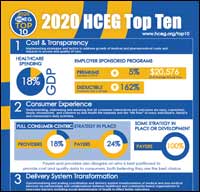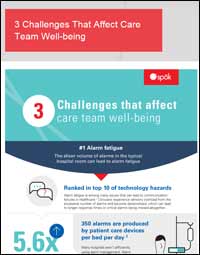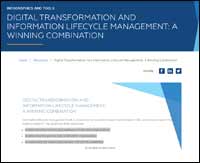Directory Assistance: The one thing payers and developers need before the full potential of the Final Interoperability and Patient Access Rule will be realized.
This summer, when the Centers for Medicare and Medicaid Services (CMS) issued the Interoperability and Patient Access Final Rule, they opened the door to a new era of patient engagement and information sharing.
The rule is designed to allow Americans to track their health insurance claims, prior authorizations, labs, scans and related information using commercially available mobile apps. Under the rule, when a member changes health plans, he or she will be able to use the app to share this information with the new insurer.
In addition to empowering patients with greater information about their claims, coverage and health history, the rule will facilitate better decision-making, care coordination and, in turn, health outcomes.
Yet, to make all of this a reality, one important piece is missing.
The CMS rule requires plans and app developers to use Fast Healthcare Interoperability Resource (FHIR) application programming interfaces (APIs) to share information. The FHIR standard was developed by the industry to allow thousands of disparate systems and apps to communicate with one another.
For this new ecosystem to work, payers and app vendors will need to be able to quickly and accurately find the digital address of the other parties with whom consumers want to share their health information. Today, there are more than 300,000 possible connections and, without a directory of FHIR endpoints, each plan or developer would have to find, catalogue, verify and maintain these addresses on its own.
The parties involved have recognized that this is a significant challenge, and the Department of Health and Human Services’ Office of the National Coordinator for Health Information Technology (ONC) FHIR at Scale Task Force (FAST) determined an endpoint directory is needed to advance FHIR implementation.
CAQH, an alliance of plans and other healthcare stakeholders, was established 20 years ago to address just this kind of industry-wide challenge by streamlining and improving provider data management, coordination of benefits, health plan directories and other essential business functions. CAQH has also brought the industry together to develop the common operating rules that allow administrative information to flow seamlessly across the healthcare industry.
In close collaboration with a broad range of industry partners, including the technology company Edifecs, CAQH is developing an endpoint directory to build on the ONC FAST foundation and simplify the exchange of data between health plans and third-party app developers. CAQH presented a prototype at several recent industry events, including the HL7 FHIR Connectathon, to gather feedback and ensure that the solution effectively meets the task at hand.
At ONC’s “Accelerating APIs in Healthcare,” CAQH announced that it would continue to engage implementers and industry experts with the goal of launching a beta version of the directory in early 2021.
This timing is critical. Among other deadlines in the CMS rule, plans are required to implement the patient access APIs in January 2021 and a process for payer-to-payer exchange by 2022. The CAQH directory will enable plans to meet these aggressive deadlines.
It may be several months before consumers begin to manage their healthcare on their phones and claims history flows smoothly between health plans. However, with an endpoints directory at hand, that day is drawing near, and we may just be about to enter a new era in consumer-driven healthcare.
About the Author: April Todd, Senior Vice President, leads the CORE and Explorations initiatives for CAQH. She is responsible for leading multi-stakeholder collaborations driving the creation and adoption of healthcare operating rules for electronic administrative transactions, researching opportunities for further administrative automation, and establishing a common foundation for new interoperability initiatives.






Leave A Comment